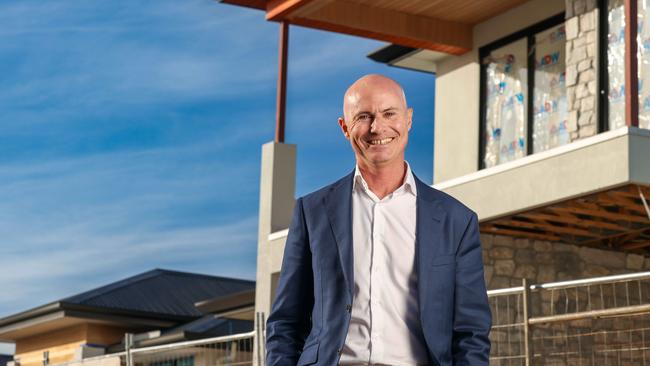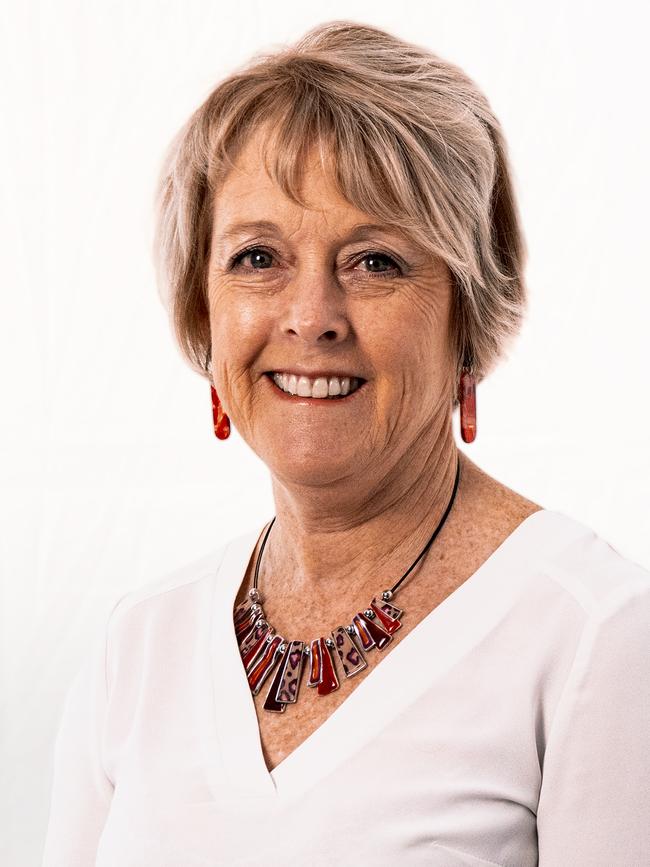New public housing and more streamlined planning process for South Australian homes
A half-billion dollar investment will ease the public housing squeeze

SA News
Don't miss out on the headlines from SA News. Followed categories will be added to My News.
The measure of any society is its ability to make sure everyone has access to a place to call home.
That’s the philosophy of SA Housing Trust executive director, property services, Mark Hayward, who says a half-billion dollar investment in the state’s public housing sector – as detailed in the Housing Roadmap – will go a long way to helping that cause.
The State Government has halted the sale of public housing properties to fund operations and is on track to deliver the biggest investment in public housing in decades, fast-tracking construction and delivering major updates and upgrades to existing homes through various programs and projects.
The SA Housing Trust – which changed back to its original moniker from the SA Housing Authority at the start of July – will be better placed to unlock more opportunities for people who need housing security.
The Trust is currently investing in almost 5000 properties through its building and maintenance programs.
“In total the current capital program we’re delivering on now is a bit over $500 million and it’s broken up into a number of different programs,” Hayward says.
This commitment includes building 1090 new public housing homes – across metropolitan and regional sites – between 2022-26 and a dedicated public housing improvement program that is undertaking major renovations on 350 homes. “On top of that are another 3000 tenanted homes that we’re going in and doing a bit of a maintenance blitz,” he says. “Some of that work includes a lick of paint, upgrading insulation, installing energy-efficient appliances, an LED lighting program and other smaller works. In addition to these programs, there is about $130 million a year we’re spending just on our normal maintenance investment.”
The SA Housing Trust currently has a stock of 32,850 homes, with the figure tipped to grow to 33,300 by 2026. A number of aged, unviable properties will be removed from the stock in the process. There are currently about 4000 people on the Trust’s category one – or highest-need – registration list, with hopes the latest moves will help ease demand.

“For the last 10 or 15 years you’ve seen a constant erosion of housing numbers and now for the first time we’ve put a stop to that and you’ll see us actually growing,” Hayward says, adding it’s important to have a mix of public housing, affordable housing and market housing to “create good social outcomes”.
“I always say the measure of any society is our ability to make sure everyone has access to a home,” he says. “The bedrock of any good housing system is making sure you’ve got a solid public housing system as a foundation. We want to be offering a range of options for people in our community.”
Building programs such the Affordable Housing Initiative – which is delivered by the SA Housing Trust and will see another 1000 homes for sale geared towards a lower price point – also provide further much-needed support. Hayward says the government is proving through its Housing Roadmap and “the big dollars on the table” that it was “really committed to understanding where the problems lie and hitting up the urgent areas”.
He also agrees with the Authority’s rebadging as the Housing Trust – an organisation which dates back to 1936 and was largely developed during Thomas Playford’s 26 years as premier. “We found the Trust is a well-known and trusted brand and it marks a return to some of those core qualities,” he says. “It recognises the investment in public housing and the growth in public housing.
“It signals the fact we have put a line through viability sales ... and marks a return to being a really significant contributor to, not just the tenants who live in our homes and the many working South Australians who purchase affordable homes, but to the roles that we play in the streets, the neighbourhoods and the communities in which we operate.”
Planning the way forward
A more streamlined planning process is a key component of the State Government’s Housing Roadmap – providing a “solid foundation” for new homes to be built faster and more efficiently.
In 2021, South Australia underwent the largest modernisation of its planning system in 20 years, introducing the Planning and Design Code and PlanSA, Australia’s first fully digital, 24/7 online planning platform.
Planning Institute of Australia (PIA) State President Cate Hart says while there had been some initial challenges, the new systems are now delivering fast-track approvals for simple applications to help ease the pressures of housing availability and affordability.

“The Planning and Design Code has been recognised nationally as the best in Australia, and planners are fully engaged with the e-planning system to bring greater transparency and efficiency to planning approvals,” she says. “We all want to see sustainable and well-planned residential communities that meet the needs of our growing population – and a good planning system with efficient and effective decision-making can deliver the plans and approvals that will ensure we achieve this.”
Hart is calling for a new long-term planning “blueprint” to complement the Housing Roadmap.
“South Australia’s housing challenges are not just about a lack of supply but are about a lack of long-term strategic planning for urban growth, both density and greenfield,” she says.
“Good strategic plans are all about setting out how and where we want to grow, so we can plan for the infrastructure, jobs and green space we need to create great communities.”
She says the current Plan for Greater Adelaide is at its “use-by date” and work on delivering a new Greater Adelaide Regional Plan is “imperative for our future”.
“The work now under way on a new Plan for Greater Adelaide will engage everyone and will deliver a better plan for the future as long as there is good planning rather than being driven just by numbers of houses on the ground.”
Addressing skills shortage across many sectors – such as planning, surveying, building and construction trades – will also be essential.
Hart says Government-led support for the reintroduction of the planning degree into SA is another welcome step.
“Since the closure of the undergraduate degree course by University SA five years ago, there has been a worsening planning shortage across South Australia,” she says.
“Without planners, there is less efficiency in planning approvals, there is not enough focus on community engagement and strategic and policy planning – and there is a lack of foresight into establishing the growth of residential areas that is sustainable and supported.
“I am thrilled this has been identified as significant plank of the Roadmap because it is not just a focus on faster approvals that will assist, it is a focus on better decision-making with the skills in the right areas to drive the delivery,” Hart says.
The Housing Roadmap is a positive move in taking a more holistic approach to “building the sort of city and state that we all support”.
“We all want certainty in terms of addressing housing needs within Adelaide and the broader region of SA,” she says. “The Roadmap also identifies some of the long-standing issues associated with land supply and the issue of water and sewage but further work is needed on ensuring new and existing communities are provided with the infrastructure needed to support them day to day.
“That is why the work on strategic and community planning is so important.
“Planning looks forward to continuing to play a key role in building a future SA and it is hoped that the strategies outlined raises the overall role and function of planning as part of the policy and strategic elements of this approach.
“It is a positive step forward in charting what Adelaide and the regions will look like and where significant housing developments can be planned for.
“PIA, and our planners, will work hard to ensure these elements are embedded in the regional plans that are also being developed.”
READ MORE:
Room to grow: Housing Roadmap a blueprint for greater home security for South Australians
SA Government investing in jobs for the future to ease state housing crisis
Originally published as New public housing and more streamlined planning process for South Australian homes


